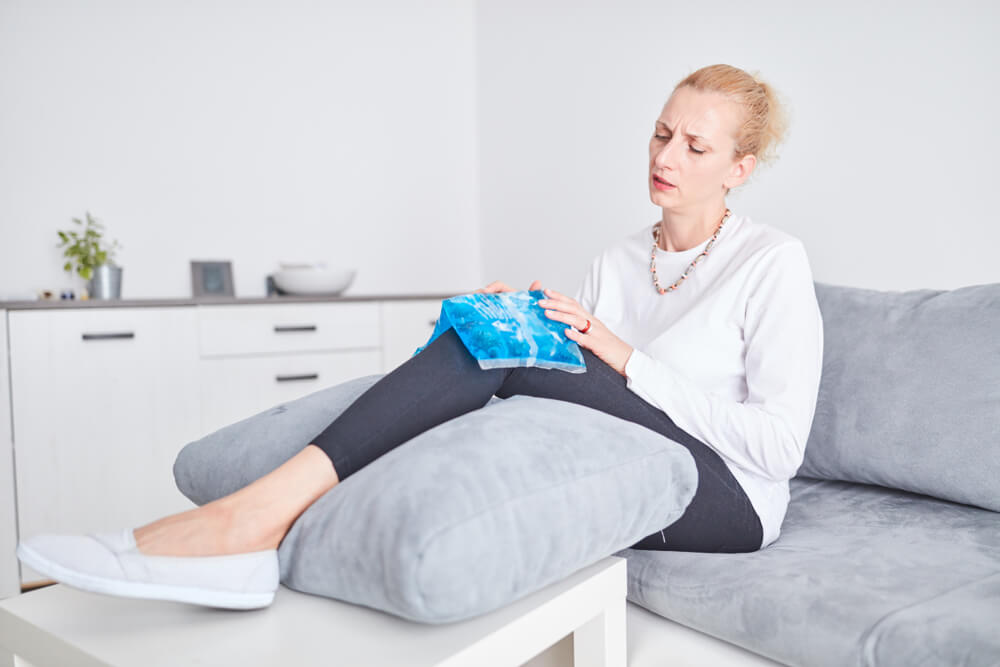
Osteoarthritis (OA) is a common degenerative joint disease that affects millions worldwide. Characterized by the breakdown of cartilage and the underlying bone, OA often leads to pain, stiffness, and decreased mobility. While various treatments exist, the use of ice therapy, or cryotherapy, has gained popularity for its simplicity and effectiveness. In this blog, we explore the benefits of using ice for managing osteoarthritic pain and how it can be integrated into your daily routine.
Understanding Osteoarthritis and Its Symptoms
Osteoarthritis primarily affects weight-bearing joints such as the knees, hips, and spine, but it can also occur in the hands and other joints. The symptoms of OA include:
-
- Pain: Typically worsens with activity and improves with rest.
-
- Stiffness: Often more pronounced after periods of inactivity.
-
- Swelling: Due to inflammation and fluid accumulation.
-
- Reduced Range of Motion: As the joint becomes stiffer and more painful.
Managing these symptoms is crucial to maintaining a good quality of life, and this is where ice therapy comes into play.
How Ice Therapy Works
Ice therapy helps manage osteoarthritic pain through several mechanisms:
-
- Reduces Inflammation: Applying ice constricts blood vessels, reducing blood flow to the affected area. This helps decrease swelling and inflammation.
-
- Numbs Pain: The cold temperature numbs the nerve endings, providing temporary pain relief.
-
- Decreases Tissue Damage: Lowering the temperature of the affected area can slow down cellular metabolism, reducing the extent of tissue damage.
Applying Ice Therapy: Best Practices
To get the most out of ice therapy, it’s essential to apply it correctly. Here are some tips:
-
- Use a Barrier: Always place a cloth or towel between the ice pack and your skin to prevent frostbite.
-
- Duration: Apply ice for 15-20 minutes at a time. Overuse can lead to skin and tissue damage.
-
- Frequency: Ice therapy can be used several times a day, especially after activities that exacerbate pain.
-
- Types of Ice Packs: Commercial gel packs, frozen peas, or homemade ice packs (a plastic bag filled with ice cubes or frozen water) are all effective options.
When to Use Ice Therapy
Ice therapy is particularly effective in certain situations:
-
- Post-Activity: After physical activity to reduce inflammation and prevent pain flare-ups.
-
- Acute Flare-Ups: During sudden increases in pain and swelling.
-
- End of Day: To soothe tired and achy joints after a day of activity.
Integrating Ice Therapy with Other Treatments
While ice therapy can significantly reduce pain and inflammation, it’s most effective when used in conjunction with other treatments:
-
- Medication: Over-the-counter pain relievers like acetaminophen or NSAIDs can complement ice therapy.
-
- Physical Therapy: Strengthening the muscles around the joint can provide better support and reduce stress on the joint.
-
- Lifestyle Changes: Maintaining a healthy weight, staying active, and using assistive devices can all help manage OA symptoms.
Precautions and Considerations
While ice therapy is generally safe, there are a few precautions to keep in mind:
-
- Skin Sensitivity: People with circulatory problems or skin sensitivity should use ice therapy with caution.
-
- Duration Limits: Avoid applying ice for longer than recommended to prevent frostbite.
-
- Consult Your Doctor: Before starting any new treatment, it’s always best to consult with your healthcare provider, especially if you have underlying health conditions.
Conclusion
Ice therapy is a simple, cost-effective method to help manage the pain and inflammation associated with osteoarthritis. By integrating ice therapy into your pain management routine, you can achieve greater comfort and improve your quality of life. At Physiopoint, we’re dedicated to providing comprehensive care and support for those living with osteoarthritis. If you have any questions or need personalized advice, our team of experts is here to help.
Stay cool and stay active!
Feel free to contact us at Physiopoint for more information on managing osteoarthritic pain and to schedule a consultation with one of our specialists. Together, we can find the best approach to help you live a more comfortable and active life.
